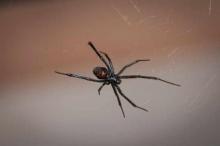
Various hazardous chemicals and poisons can sometimes be found in a playground environment. These are the result of treatments applied to play equipment or living organisms that affect playground areas.
Arsenic
Arsenic is the main ingredient in a wood preservative called Chromated Copper Arsenate (CCA). This preservative was used for wood play equipment in both residential and commercial settings until 2004 when the U.S. Environmental Protection Agency (EPA) and CCA manufacturers agreed to discontinue manufacturing it because of the toxic nature of the preservative. Both the wood play equipment and the landscaping ties that contain the protective surfacing could still contain this preservative if they predate 2004.
After playing in an environment with older wood equipment, children should immediately wash their hands to minimize the effects of possible exposure to arsenic. Workers who sand, seal, or repair older wood equipment wear appropriate protective gear to avoid exposure.
Lead
Lead can still be found in the paint on very old playground equipment. Lead was used in playground paint until 1974, and any equipment older than that still having a painted surface could contain lead. The lead can be found in paint chips under and around old metal equipment. If children touch areas where the paint is coming off and put their hands in their mouths, they may be exposed to the lead. If paint chips are found under the equipment, the ground can be covered with landscape fabric and an appropriate amount of protective surfacing to eliminate the possibility of children coming into contact with the paint chips. The paint on the playground equipment that contains lead can also be removed or covered to eliminate the danger.
Pesticides
The use of pesticides on park and school grounds has been a matter of concern to all playground operators. Pesticides that have been used for coating wood play structures, landscaping, and weed removal can end up on children’s hands, which then end up in children’s mouths. Children are especially vulnerable to the chemicals in pesticides as their brains and bodies are still developing.1
Poisonous Plants
Poisonous plants such as Poison Ivy, Poison Oak, and Poison Sumac are sometimes found growing in the vicinity of children’s playgrounds. There may also be other poisonous plant materials that could grow in or near playgrounds depending on the geographic location and weather conditions.
Poisonous “critters”
Living creatures such as poisonous snakes or spiders may be found in or near playgrounds, depending on the location and the weather conditions. There may also be other types of poisonous animals that are potentially hazardous to children on a playground as well.
- 1. “Schools and Playgrounds.” Pesticide Action Network North America. < http://www.panna.org/issues/frontline-communities/schools-playgrounds > 9 March 2010.

